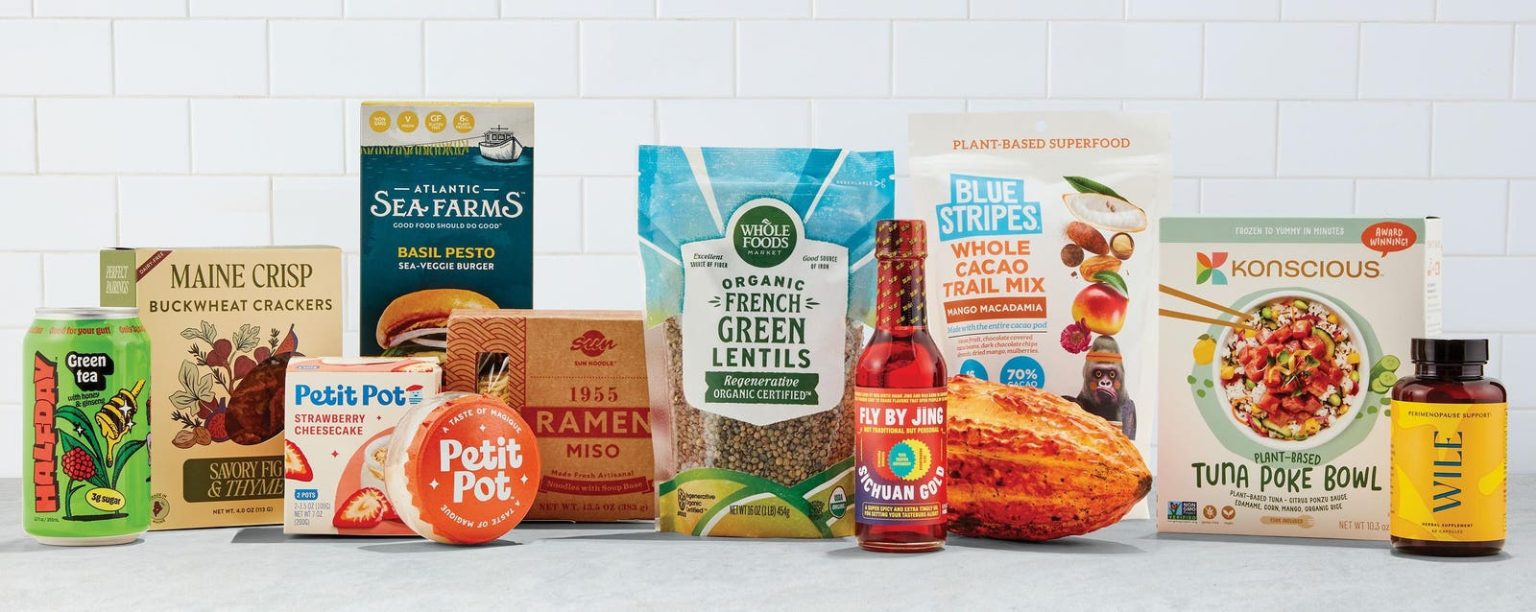Whole Foods Market’s Trends Council has unveiled their top 10 anticipated food trends for 2024 in the retailer’s ninth-annual trends predictions report.
Each year, the collective of more than 50 Whole Foods Market team members, including foragers, buyers and culinary experts compile trend predictions based on experience and expertise in product sourcing and studying consumer preferences.
“The group we refer to as our Trends Council is identifying trends, gathering data and consumer insights, looking for themes in ingredients and shopping habits, and helping us determine whether or not there is growth potential of what we’re seeing both in and outside of our stores,” says Cathy Strange, Ambassador of Food Culture for Whole Foods Market and member of the Trends Council. “They’re constantly clocking innovation and staying aware of trends whether they’re at a food show or shopping at a farmer’s market.”
Strange says that what some people are not aware of is that, yes, the Trends Council is made up of buyers across different categories, but it also includes local foragers, the quality standards team, Whole Foods’ culinary innovation team, and the private label product development team.
“It’s truly a level of expertise that not every retailer can boast about,” Strange says. “Because our internal teams look at the food industry as a whole when we’re seeking out trends, not just the products found on our shelves, our predictions list is a way for us to pull back the curtain for customers and share insight into what our buyers and culinary experts are keeping on their radar for the upcoming year.”
Whole Foods Market’s top 10 food trend predictions for 2024:
Putting the plant back in plant-based
The OGs of plant-based cuisine are making a comeback, putting the “veggie” back in your veggie burger and shrinking labels all over the plant-based category. New and emerging protein-forward products feature mushrooms, walnuts, tempeh and legumes in place of complex meat alternatives. Even plant-based milk brands are simplifying labels to just two ingredients.
Using the whole cacao
Utilizing by-products like cacao pulp has been practiced in other countries for centuries, and now brands like Blue Stripes are spotlighting the whole cacao, such as cacao fruit powders as sweeteners. At EARTH University in Costa Rica, where student researchers are tackling some of the biggest systemic environmental issues, the typically discarded cacao pulp is being made into jellies and jams.
Buckwheat takes center stage
Gaining popularity as a cover crop to support soil health, buckwheat is a superfood containing protein, carbs and fiber, and it’s naturally gluten free. You may have seen it in the form of soba noodles, but with more brands on a mission to improve agriculture, buckwheat might start appearing in everything from plant-based milk alternatives to crackers and granola.
Fancy faux fish
With tinned fish and caviar taking off earlier this year, vegan versions are popping up to ride the fancy fish trend. Plant-based “seafood” brands are stepping up, bringing the flavor and texture needed to rival the real thing. Examples include carrots in place of lox, trumpet mushrooms for scallops, and the root vegetable konjac getting its moment in sushi rolls and poke bowls.
Embracing water stewardship
Brands across the aisles are promoting water conservation, and consumers are listening. New water brands use water from fruit by-products, which would otherwise be discarded. With the growing trend of regenerative agriculture, a Regenerative Organic Certification also requires soil health initiatives that ultimately conserve water. And non-governmental organizations are showing support of farmed oysters, leveraging aquaculture to filter water and help restore coastal ecosystems.
Adding a complex heat
Complex heat continues its evolution, with chiles from around the world taking off in every aisle — from chile-spiced snacks to spicy drinks and international condiments. Specialty varieties like Scorpion Peppers, Guajillo or Hungarian Goathorns are found fresh, whole, ground or pickled, and a new wave of botana sauces and chili oils are popping up in condiment aisles nationwide.
New instant noodle options
Shoppers have been finding ways to dress up their instant ramen at home for years, but as brands step up their game, noodle lovers don’t have to do all the work as brands are creating more gourmet options, while keeping away from certain preservatives and added MSG. As people seek simple and instant meals, noodles are bringing all the ease and comfort of a warm bowl with quality ingredients and more exciting flavors.
Little Luxuries
Brands are getting in on the trend by considering both cost and format — like individual serving packages that add joy without breaking a budget, taking cues from outlets like The Kitchn who regularly dish out lists of “Little Luxuries” found for $10 or less. Think petite dessert treats like macaroons and one-bite cheesecakes to gourmet brown butter lattes and sustainable, elegant tinned seafood options as a light, high-end snack.
Promoting women’s health
More brands are making products to support periods, pregnancy, postpartum, menopause and even sleep that address life stages and symptoms previously swept under the rug. Food innovators are introducing specially formulated bars and snacks for cycle health, like menopause energy bars and other functional treats.
Getting a better boost
Combining a caffeine boost with benefits has never been easier. Thanks to new coffee and energy drinks with added mushrooms, adaptogens, probiotics and more, the “clean caffeine” trend keeps growing, offering products that can avert a caffeine crash and promote focus and calm.
“From specific product ingredients and flavor trends, to growing movements in the food industry, we can’t wait to see these trends gain momentum in the year ahead,” says Strange.
Read the full article here





